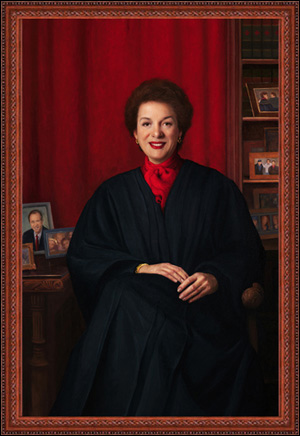Trailblazing former New York judge Judith Kaye dies at 77

Portrait of Judith Kaye from the Historical Society of the New York Courts.
Judith Kaye, the first woman to lead the New York State Court of Appeals, has died.
The cause of death for Kaye, 77, was not reported, according to the Times Union. Kaye led the state court for 15 years, according to the article, and stepped down due to mandatory retirement rules in 2008. At the time of her death she was of counsel with Skadden, Arps, Slate, Meagher & Flom. In an ABA Journal post at the time she joined the firm, Kaye said that full retirement held no appeal for her.
“I just have so much left to do,” she said in 2009. “I’ve never thought of stopping, and I’ve never thought of writing a book.”
Kaye was nominated to the court in 1983 by Gov. Mario Cuomo, the Times Union reports. In 1993 he tapped her to serve as chief judge. She was unanimously confirmed by the state senate both times.
In a statement published by Above the Law, Rory I. Lancman, a New York City Council member and the chair of the Courts & Legal Services Committee, described Kaye as a “trailblazer.”
“She pushed New York forward on specialized courts for drug addiction, mental health and domestic violence, and instituted historic reforms making jury service fairer and more efficient,” he said. “The Center for Court Innovation, established on her watch, is the envy of judicial systems across the country and at the vanguard of today’s effort to reform our country’s justice system.”
“Judge Kaye’s life was one of service to the state of New York, the legal system, the legal profession and the children of New York; her contributions cannot be overstated,” Skadden executive partner Eric Friedman said in a written statement. “The first woman to ever serve on the New York Court of Appeals, and the court’s longest-serving chief judge, she was a true pioneer. We have been honored to have her as our colleague and friend over the past six years. She will be deeply missed.”
An in-depth profile of Kaye’s life and career is available from the Historical Society of the New York Courts.
Updated at 1:48 p.m. to include Friedman’s statement.



